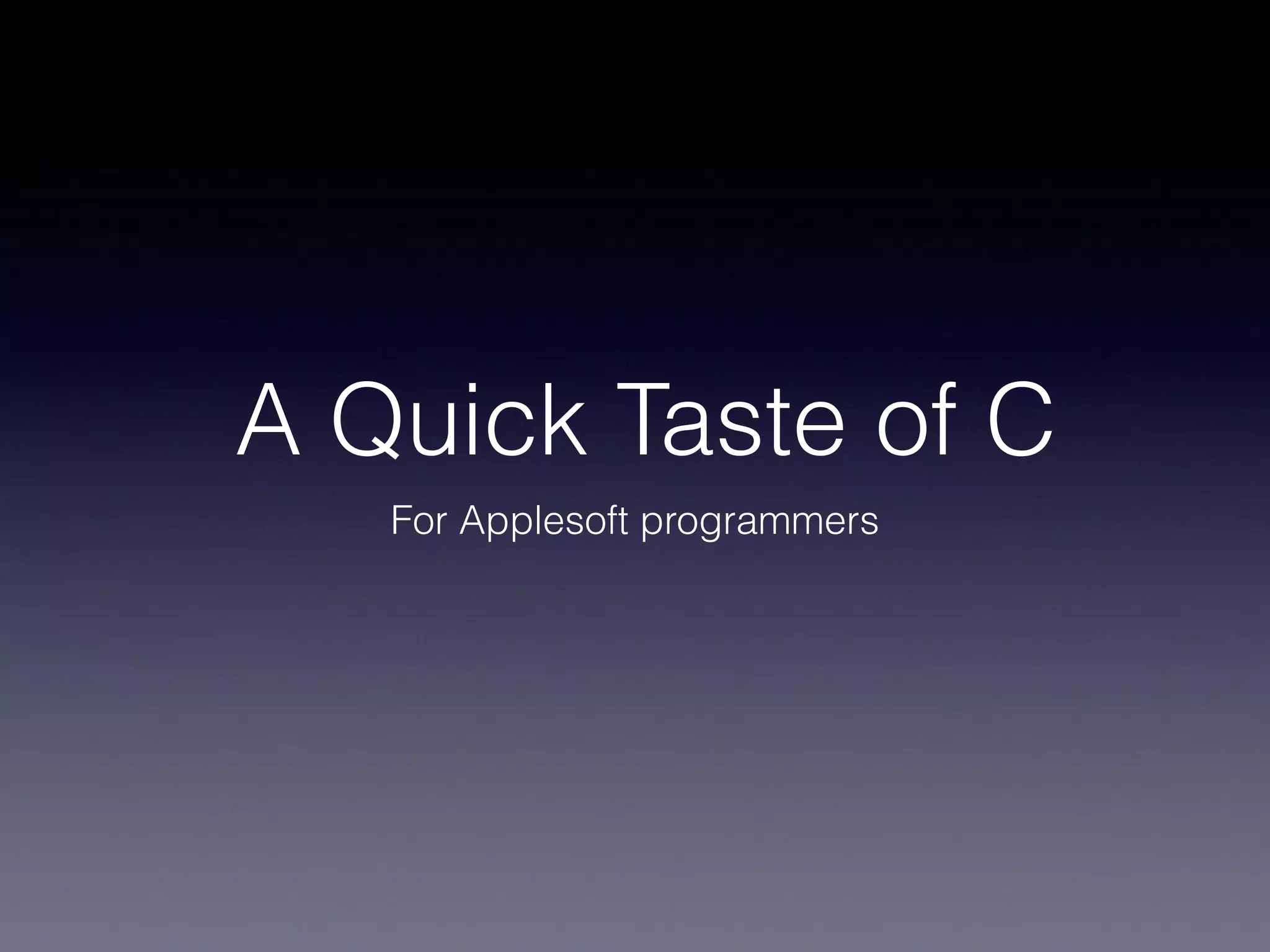This document introduces C programming to AppleSoft programmers, highlighting the advantages of C such as faster execution and easier coding compared to AppleSoft. It explains key differences between C and AppleSoft, including variable declaration, function structures, and control flow statements like loops and if conditions. The document also provides code examples to illustrate concepts like printing variables, reading input, and writing loops.













![Variable Types
Applesoft C
Integers X% = 5 int x = 5;
Floating point Y = 1.5 float y = 1.5;
Strings Z$ = “HELLO” char z[] = “hello”;
Note: cc65 does not support floating point!](https://image.slidesharecdn.com/aquicktasteofc-150716061527-lva1-app6892/75/A-Quick-Taste-of-C-14-2048.jpg)





![Printing Strings
• Here is an example of printing a character variable
#include
<stdio.h>
int
main(void)
{
char
x[]
=
“hello”;
printf(“x
=
%sn”,
x);
return
0;
}
• The %s character is special to printf(). When it sees a %s, it looks at the
next input argument. It expects to find a string and it replaces the %s with
the value. In this case, it prints “x = hello”.](https://image.slidesharecdn.com/aquicktasteofc-150716061527-lva1-app6892/75/A-Quick-Taste-of-C-20-2048.jpg)

![Getting Input
• Here is an example of reading a line of text:
#include
<stdio.h>
int
main(void)
{
char
buffer[80];
//
80
bytes
fgets(buffer,
sizeof(buffer),
stdin);
printf(“You
typed
=
%sn”,
buffer);
return
0;
}
• The fgets() function gets a string from a file (File GET String or fgets).
• The “file” it reads from is the special file “stdin” which is short for standard input which
is generally the keyboard.](https://image.slidesharecdn.com/aquicktasteofc-150716061527-lva1-app6892/75/A-Quick-Taste-of-C-22-2048.jpg)









